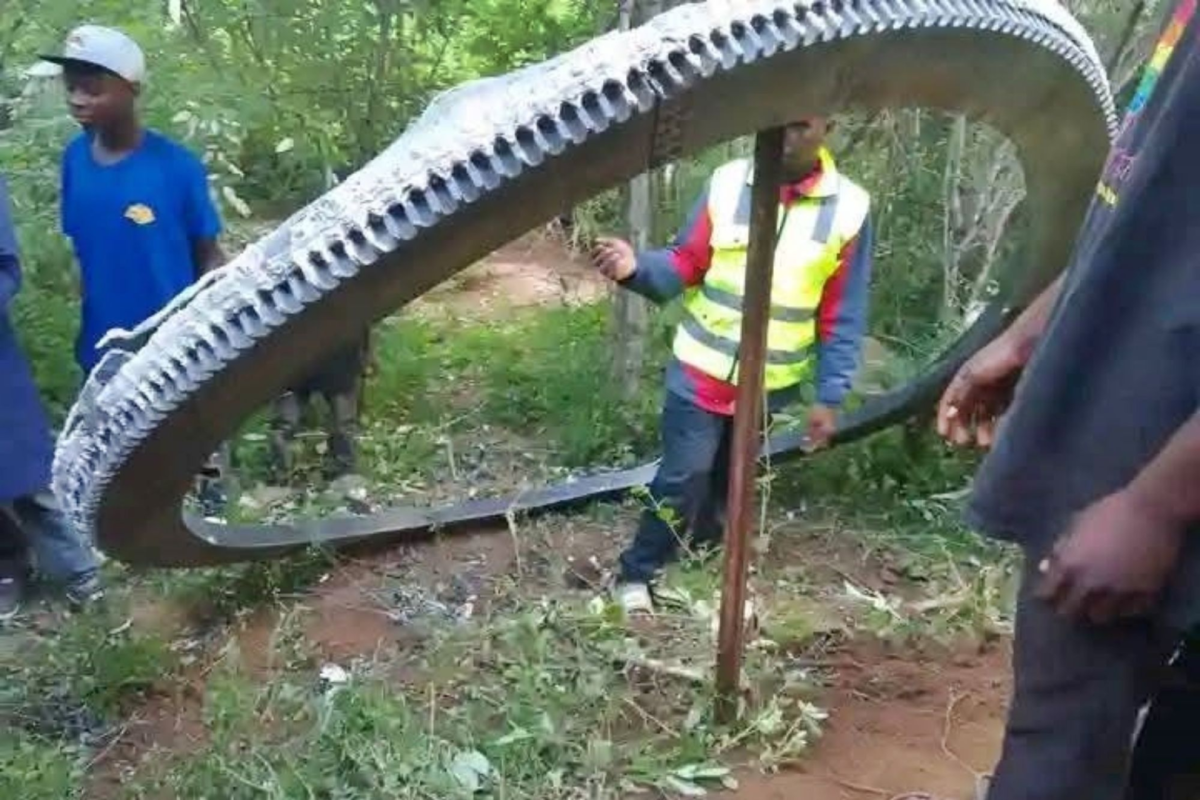On December 30th, in a small village located in Kenya, locals were startled into distress as a ‘red-hot’ metal ring suddenly slammed into the ground. Fortunately, no one was hurt, but the object that had arrived looked like something straight out of a sci-fi TV show, and authorities rushed to uncover exactly what just landed on our planet. Having a diameter of over eight feet (about 2.66 yards), and a weight of over 1,100 pounds (almost 500 kilograms), this was no small metal ring. On top of that, no space agencies had any knowledge of its presence or the fact that it must have entered Earth’s atmosphere at over 30,000 miles per hour (about 48,000 kilometers per hour). So, what is this unearthly object and what is it doing here?
The answer might not be surprising, but it is concerning.
Just days after the crash landing, the Kenya Space Agency (KSC) confidently announced that the ring was an untracked piece of space debris, originally from a space rocket. Space trackers, people who locate objects in space, have been working tirelessly to find out which spacecraft this ring belonged to, yet to no avail. The initial claim was that it had been thrown into orbit from the reentry of the SYLDA 5 shell, a European rocket that had recently launched a couple of satellites into space. However, there is limited evidence that this is true. In addition, due to a lack of space trackers along the equator, the ring’s last known observation was on December 23rd.
The space just outside of Earth’s atmosphere is getting more and more crowded, with more than 170 million pieces of debris orbiting around Earth, so it’s not surprising that one entered our atmosphere. What is surprising, however, is that it survived the burning friction from all the air molecules and landed in a location where people lived. “Such objects are usually designed to burn up as they reenter the Earth’s atmosphere or to fall over unoccupied areas, such as the oceans,” the space agency stated to The New York Times.
Not only people on Earth are in jeopardy from falling debris, but with how much junk is floating around, and more joining it with every space launch, future missions to the cosmos could be in danger. Most of the debris are only a couple of millimeters to a couple of centimeters long. Yet, it is these particles that do the most damage. Small bits of metal can clog sensitive parts of the spacecraft, leading to misread information, broken thrusters, or other threatening harm. In a video, Holger Krag, Head of the European Space Agency’s Space Debris Office, explained, “The energy contained in a one-centimeter particle hitting a satellite at that velocity roughly corresponds to an exploding grenade.”
Space around Earth is becoming increasingly limited. Experts agree that something must be done, and we have yet to see what technological solutions space agencies will come up with in the near future.




























